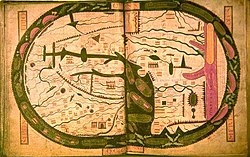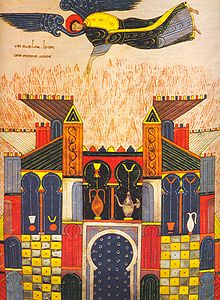Del 9 al 13 de abril se llevó a cabo el meeting en Santander de todos los participantes en este Proyecto Comenius.
La experiencia fue muy gratificante y enriquecedora para todos, y si queréis ver una muestra de las actividades realizadas, no tenéis más que pinchar en el siguiente enlace en el que podréis ver los vídeos realizados durante las distintas jornadas.
Videos meeting in Santander.
Y aquí podeis ver alguanas de las fotos del meeting.
Fotos meeting Santander 2011
The meeting in Santander of our ComeniusProject was held between 9 to 13 April.
The experience was very rewarding and enriching for all, and if you want to see a sample of the activities that we did , you only have to click on the following link where you can watch the videos made during the various sessions.
Video meeting in Santander.
To see the some photos click here.
Photos meeting Santander 2011
IES SANTA CLARA :COMENIUS 2011
Este blog nace con la finalidad de mostrar las actividades que estamos realizando desde el IES Santa Clara en nuestro proyecto "ENTRE LAS RELIGIONES Y LA ÉTICA, UNA BASE COMÚN"
This blog was created with the purpose of showing the activities we are doing from the IES Santa Clara in our project:
jueves, 5 de mayo de 2011
martes, 15 de marzo de 2011
jueves, 10 de marzo de 2011
jueves, 10 de febrero de 2011
Beato,contextualizacion. (Beato, contextualization)
SAN BEATO DE LÍEBANA
Beato de Liébana fue un abad del monasterio de San Martín de Turieno, hoy Santo Toribio de Liébana, que vivió en la segunda mitad del siglo VIII.
 Beato de Liébana escribió el manuscrito titulado “Comentarios al Apocalipsis” y posteriormente esta obra fue copiada e ilustrada en estilo mozárabe. Las copias son conocidas como ‘Beatos’, y destacan por el valor artístico de las ilustraciones que adornan el texto.
Beato de Liébana escribió el manuscrito titulado “Comentarios al Apocalipsis” y posteriormente esta obra fue copiada e ilustrada en estilo mozárabe. Las copias son conocidas como ‘Beatos’, y destacan por el valor artístico de las ilustraciones que adornan el texto.Contexto histórico:
En el año 711 un ejército comandado por Táriq ibn Ziyad cruza el Estrecho de Gibraltar iniciando así la dominación musulmana de la Península Ibérica que duraría ochocientos años. Hasta entonces reinaba la dinastía visigoda convertida al cristianismo desde el año 380. En sólo tres años la península fue ocupada por los musulmanes con excepción de la Cordillera Cantábrica.
Muchos católicos visigodos que huían de los musulmanes buscan refugio en dicha región, y es aquí, al pie de los Picos de Europa, donde el monje Beato de Liébana escribe su famoso manuscrito.
Eran tiempos difíciles para los cristianos; además se acerca el año 800, que según algunos iba a suponer el fin del mundo.
Entre 776 y 784 escribe Beato su «Comentario al Apocalipsis», cuya finalidad es el adoctrinamiento de los monjes ante el convencimiento de la inminente llegada del fin del mundo.
 El libro adquirió inmediata fama y repercusión debido al contexto histórico en el que fue escrito. El Beato lo hizo con deliberado propósito no sólo religioso de reforzar las creencias cristianas, sino también social y político, de estimular la cohesión en torno a la monarquía astur-leonesa, fundada tras la batalla de Covadonga en 718, como centro de referencia del poder cristiano en la Península frente al invasor, enemigo de su religión y en una palabra de su Dios, identificándolo con la Bestia y el Anticristo apocalípticos; la Babilonia del Apocalipsis –“la gran ramera”- sería ahora Córdoba, y a los fieles se prometía el regreso de Cristo quien derrotaría al enemigo, celebraría el Juicio Final e instaurará por siempre el reino de Cristo en la Tierra.
El libro adquirió inmediata fama y repercusión debido al contexto histórico en el que fue escrito. El Beato lo hizo con deliberado propósito no sólo religioso de reforzar las creencias cristianas, sino también social y político, de estimular la cohesión en torno a la monarquía astur-leonesa, fundada tras la batalla de Covadonga en 718, como centro de referencia del poder cristiano en la Península frente al invasor, enemigo de su religión y en una palabra de su Dios, identificándolo con la Bestia y el Anticristo apocalípticos; la Babilonia del Apocalipsis –“la gran ramera”- sería ahora Córdoba, y a los fieles se prometía el regreso de Cristo quien derrotaría al enemigo, celebraría el Juicio Final e instaurará por siempre el reino de Cristo en la Tierra.Beato alcanzó gran fama por su intervención en la controversia suscitada por la herejía «adopcionista», enfrentándose a Elipando, arzobispo primado de Toledo, la antigua capital del reino visigodo, defendiendo la ortodoxia católica frente a la herejía que afirmaba que Cristo era solamente hijo «adoptivo» de Dios. En el cruce de acusaciones, Elipando llama a Beato "falso profeta " y habla de sus "escritos apestosos", y Beato le responde tratándolo de "cojón del anticristo"
 En el proceso se vio implicado el propio emperador Carlomagno, que convocó un Concilio en Ratisbona, en el cual se ratificaron las posturas de Beato frente a los herejes, con el apoyo del emperador.
En el proceso se vio implicado el propio emperador Carlomagno, que convocó un Concilio en Ratisbona, en el cual se ratificaron las posturas de Beato frente a los herejes, con el apoyo del emperador. Pero estos acontecimientos solo serían anecdóticos si la herejía del obispo Félix no hubiera seducido también a los ocupantes musulmanes. Había en estas tesis un cuestionamiento de la naturaleza divina de Jesús que conducía a una devaluación del cristianismo. Algunos historiadores piensan incluso que Elipando se habría hecho el apóstol del adopcionismo para agradar a las autoridades árabes.
Todo esto explica la importancia del libro del “Apocalipsis” entre los cristianos del noroeste de España, y el impacto del “Comentario” que hace un monje muy implicado en la lucha contra las herejías, el gobierno de ocupación y los religiosos colaboradores.
Fuentes consultadas::
v El arte de la fuga. Blog de Federico Zertuche,
v Beato de Liébana y los beatos Una iconografía que marcó una época por Enrique Campuzano Ruiz Doctor en Hª del Arte, director del Mº Diocesano y comisario de la exposición sobre Beato.
St. BEATO OF LIÉBANA:
Life, religious and ethical values.
Life, religious and ethical values.
Beatus of Liebana was an abbot of the monastery of San Martín de Turieno, now SantoToribio de Liebana, in Cantabria, North of Spain.
He lived in the second half of the eighth century.
Beatus of Liebana wrote the manuscript entitled The Commentary on the Apocalypse (Commentaria In Apocalypsin) and later this work was copied and illustrated in Moorish style. Copies are known as 'Beatos', and noted for the artistic value of the paintings that adorn the text.
Beatus of Liebana wrote the manuscript entitled The Commentary on the Apocalypse (Commentaria In Apocalypsin) and later this work was copied and illustrated in Moorish style. Copies are known as 'Beatos', and noted for the artistic value of the paintings that adorn the text.
Historical Context:
In 711 an army commanded by Tariq ibn Ziyad crossed the Strait of Gibraltar, it's the begin of the Muslim domination of the Iberian Peninsula that lasted eight years. Until then reigned the Visigothic dynasty who converted to Christianity in the year 380. In just three years the peninsula was occupied by Muslims with the exception of the Cantabrian Mountains. Many Catholics fleeing Visigoths Muslims took refuge in this region, and is here in thePicos de Europa, where the monk Beatus of Liebana wrote his famous manuscript.
It were hard times for Christians and they believed that around 800 come the end of the world.
 Between 776 and 784 Beato writes his "Commentary on the Apocalypse", whose purpose is to indoctrinate the monks to the conviction of the imminent arrival of the end of the world.
Between 776 and 784 Beato writes his "Commentary on the Apocalypse", whose purpose is to indoctrinate the monks to the conviction of the imminent arrival of the end of the world.The book became very famous because of the historical context in which it was written. He did with deliberate purpose not only to strengthen religious Christian beliefs but also social and political, to encourage cohesion around the Asturian-Leonese monarchy, founded after the Battle of Covadonga in 718, as a reference centre of power Peninsula Christian against the invader, the enemy of their religion and their word of God and identified with the apocalyptic Beast and the Antichrist, the Babylon of Revelation - "the great whore" - would now Córdoba, and the faithful are promised the return of Christ (the Parousia) who will defeat the enemy, held the Last Judgement and establish forever the kingdom of Christ on Earth.
Beatus achieved great fame for his role in the controversy raised by heresy 'adoption ', facing the Elipando, archbishop of Toledo, the ancient capital of the Visigoth kingdom, defending Catholic orthodoxy against heresy which claimed that Christ was only a child "Adoptive "of God.
Elipando tells to Beato: "False Prophet " , and he says that Beatus’s writings are "written smelly" and Beatus answers him that he is :” the balls of the Antichrist”.
In the process he was involved the emperor Charlemagne, who convened a council in Regensburg, which were endorsed positions against heretics Blessed with the supportof the Emperor.But these events would only be anecdotal if not heresy of Bishop Felix also had seduced the Muslim occupiers. In this thesis was questioning the divine nature of Jesus.
Source consulted:
- The Art of Fugue. Blog de Federico Zertuche,
- Beatus of Liebana and Blessed One iconography that marked an era by EnriqueCampuzano Ruiz Doctor in History of Art, director of M º Diocesan and curator of theexhibition of Beato.
- The Art of Fugue. Blog de Federico Zertuche,
- Beatus of Liebana and Blessed One iconography that marked an era by EnriqueCampuzano Ruiz Doctor in History of Art, director of M º Diocesan and curator of theexhibition of Beato.
viernes, 4 de febrero de 2011
Para saber más sobre Beato de Líebana (To learn more about Beatus of Liébana)
 Para saber más sobre Beato de Liébana te recomendamos visites este artículo de la wikipedia:
Para saber más sobre Beato de Liébana te recomendamos visites este artículo de la wikipedia:Beato de Liébana
If you want to learn more about Beatus of Liebana recommend you visit this wikipedia article:
Beatus of Liébana
Beato de Liébana - Apocalipsis
Los Beatos, los libros más bellos del mundo
(Los Beatos the world's most beautiful books)
 Commentary on the Apocalypse (Commentaria In Apocalypsin) was originally an eighth century work by the Spanish monk and theologian Beatus of Liébana. Today, it refers to any of the extant manuscript copies of this work, especially any of the 26 illuminated copies that have survived. It is often referred to simply as the Beatus. The historical significance of the Commentary is made even more pronounced since it included a world map, which offers a rare insight into the geographical understanding of the post-Roman world. Considered together, the Beatus codices are among the most important Spanish medieval manuscripts and have been the subject of extensive scholarly and antiquarian enquiry.
Commentary on the Apocalypse (Commentaria In Apocalypsin) was originally an eighth century work by the Spanish monk and theologian Beatus of Liébana. Today, it refers to any of the extant manuscript copies of this work, especially any of the 26 illuminated copies that have survived. It is often referred to simply as the Beatus. The historical significance of the Commentary is made even more pronounced since it included a world map, which offers a rare insight into the geographical understanding of the post-Roman world. Considered together, the Beatus codices are among the most important Spanish medieval manuscripts and have been the subject of extensive scholarly and antiquarian enquiry.
Suscribirse a:
Comentarios (Atom)










